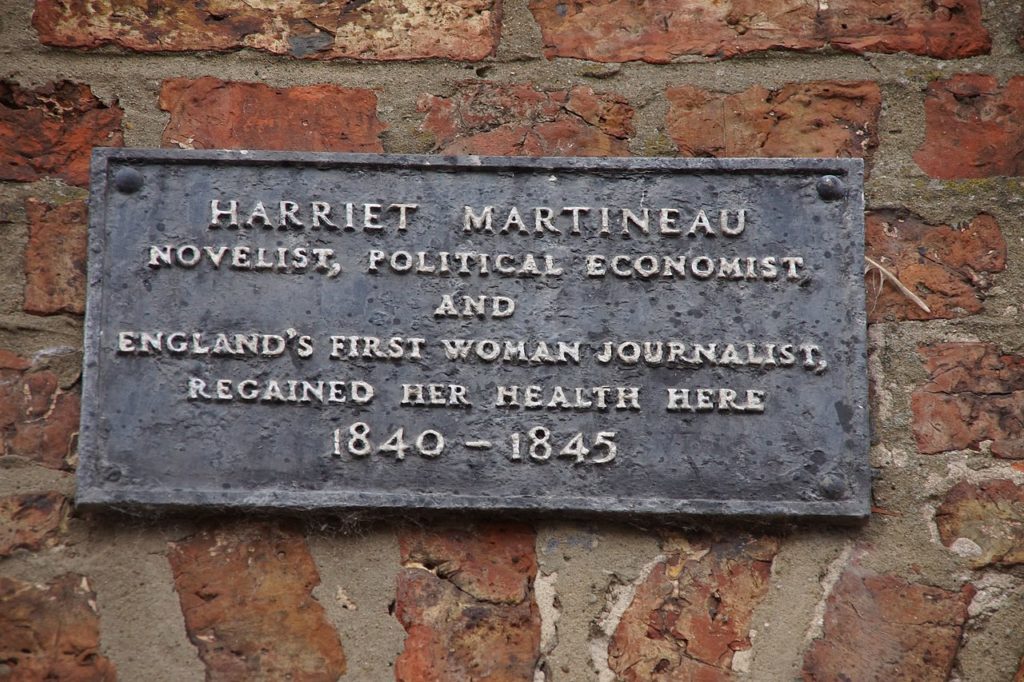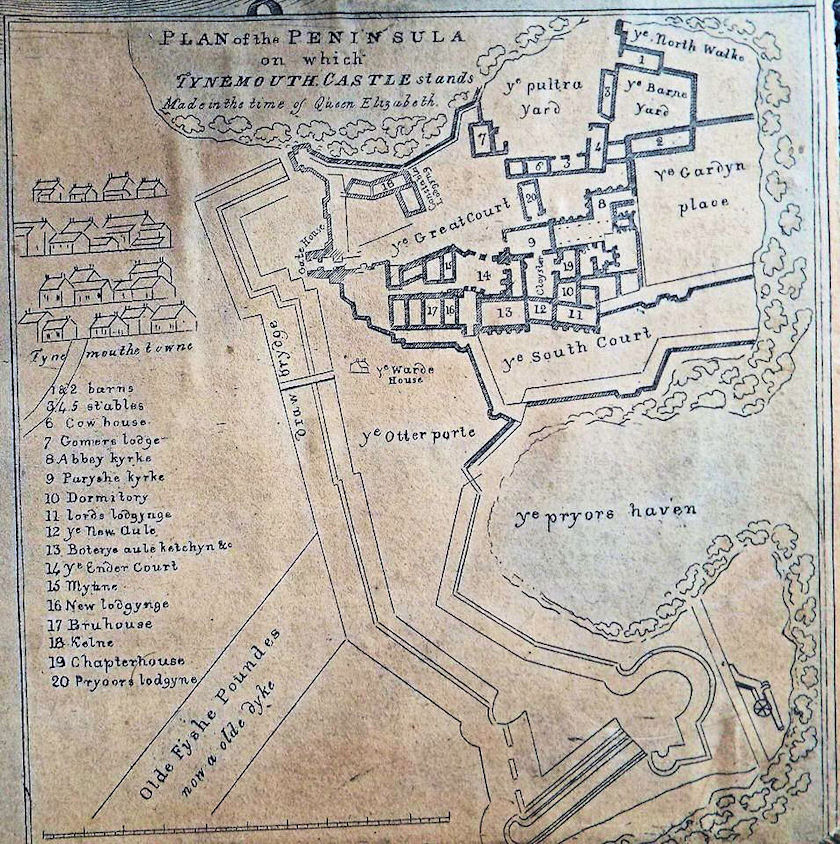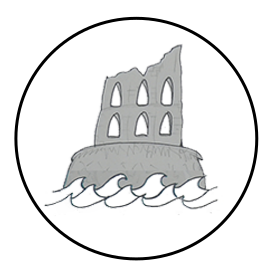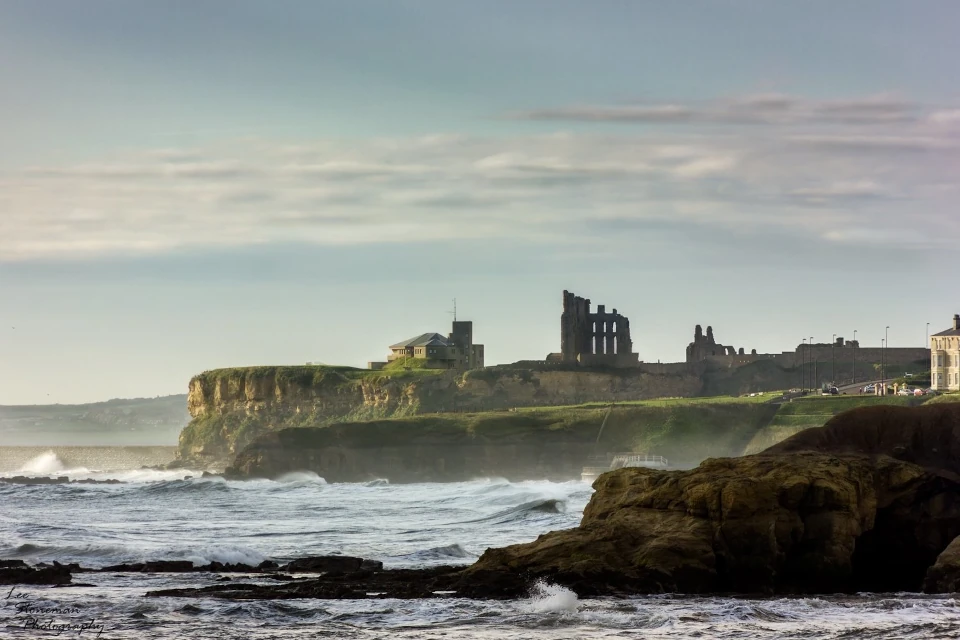Harriet Martineau’s Musings on Tynemouth
Harriet Martineau was a pioneering Enlightenment thinker. Primarily a feminist and abolitionist, she was at the centre of intellectual society of her day, was a friend of Princess Victoria, and famous in both Britain and America.
Through her illustrated pamphlets, which outsold the works of Charles Dickens, she both educated the public in political economy and sociology, and influenced government policy .
She lived from 1802 to 1876 and was plagued by ill health throughout her life. Thus in 1840 she retired to Tynemouth for five years in order to convalesce.

This is what she wrote about the place from her room, equipped with a telescope, at 57 Front Street.
Here, she is looking across what is now Prior’s Park to South Shields and imagining the old salmon weirs in Prior’s Dene (The Howlings). Presumably she had recently viewed the Elizabethan map of the place, which was being reproduced around 1830.
“Between my window and the sea is a green down, as green as any field in Ireland; and on the nearer half of this down, haymaking goes forward in its season. It slopes down to a hollow, where the Prior of old preserved his fish, there being sluices formerly at either end, the one opening upon the river, and the other upon the little haven below the Priory, whose ruins still crown the rock. From the Prior’s fish-pond, the green down slopes upwards again to a ridge; and on the slope are cows grazing all summer, and half way into the winter. Over the ridge, I survey the harbour and all its traffic, the view extending from the light-houses far to the right, to a horizon of the sea to the left. Beyond the harbour lies another county, with, first, its sandy beach, where there are frequent wrecks—too interesting to an invalid,—and a fine stretch of rocky shore to the left; and above the rocks, a spreading heath, where I watch troops of boys flying their kites; lovers and friends taking their breezy walk on Sundays; the sportsman with his gun and dog; and the washerwomen converging from the farm-houses on Saturday evenings, to carry their loads, in company, to the village on the yet further height.”

On the benefits of winter at the Coast.
“The snow does not lie; at least rarely for more than a few hours; and then it has no time to lose its lustre. When I look forth in the morning, the whole land may be sheeted with glittering snow, while the myrtle-green sea swells and tumbles… for before sunset the snow is gone, except in the hollows; all is green again on shore, and the waves are lilac, crested with white. My winter pleasures of this kind were, at first, a surprise to me. I had spent every winter of my life in a town; and here, how different it is! The sun shines into my room from my hour of rising till within a few minutes of dusk, and this, almost settled by custom, till February, our worst month. The sheeny sea swelling in orange light, is crossed by fishing-boats, which look black by contrast, and there is none of the deadness of winter in the landscape; no leafless trees, no locking up with ice; and the air comes in through my open upper sash brisk, but sun-warmed. The robins twitter and hop in my flower-boxes, outside the window; and the sea birds sit on the water, or cluster on the spits of sand left by the tide. Within doors, all is gay and bright with flowering narcissus, tulips, crocus, and hyacinths. And at night, what a heaven! What an expanse of stars above, appearing more steadfast, the more the Northern Lights dart and quiver! And what a silvery sheet of moonlight below, crossed by vessels more black than those which looked blackest in the golden sea of the morning!”
Then, lamenting the rough winter weather, she describes ships wrecked upon the Black Middens and Herd Sands.
“sooner or later in the day, we see the ominous rush of men and boys on the rocks and the ridge, and we know there is mischief. We see either a vessel labouring over the bar, amidst an universal expectation that she will strike; or we see, by a certain slope of the masts, that she is actually on the rocks; or she drives wilfully over to the sands, in spite of all the efforts of steam-tugs and her own crew; and then forth the life-boats, which we cannot help watching, but which look as if they must themselves capsize, and increase the misery of preventing it. Then, when the crew are taken from the rigging, and carried up to the port, ensues the painful sight of the destruction of the vessel; parties, or files of women, boys, and men, passing along the ridge or the sands with the spoils; bundles of sailcloth, armsful of spars, shoulder-loads of planks; while, in the midst, there is sure to be a report, false or true, of a vessel having foundered, somewhere near at hand. On such days, it is a relief to bar the shutters at length, and close the curtains, and light the lamp, and, if the wind will allow, to forget the history of the day.”
From Life in the Sick-room: Essays by an Invalid (1844)
Listen to the audio for this post here:





